
At what time does the sun reach its highest point in the southern tropics?
When does the sun reach the zenith in the southern tropics?

What is the latitude where the sun is at its zenith?
What is the latitude where the sun is at its zenith.

What place on Earth experiences equal day and night and the Sun reaches its highest point twice a year?
Which location on Earth has a day that is always the same length as the night and the Sun reaches its highest point twice a year?

Is there an equal length of day and night on the equator?
Is there an equal length of day and night on the equator?
Which location on Earth experiences day and night of equal length throughout the year, with the Sun directly overhead twice a year?
What is the term for the highest point of the Sun in the sky: a) zenith b) equator c) tropic Complete the sentence: “The angle at which the Sun’s rays hit the Earth’s surface and the Sun’s elevation above the horizon decrease when.

Can you please inform me as soon as possible where on our planet the duration of the day is always equal to the duration of the night, and the Sun reaches its highest point twice a year?
I kindly request an urgent response regarding the location on Earth where the length of the day and night are always equal, and the Sun is at its zenith twice a year.

Does the sun never reach its highest point?
The sun never reaches its zenith.

What is a key aspect of the polar night?
Determine the crucial element of the polar night.
This parallel marks the start of polar days and nights.

What is the region where the sun reaches its highest point twice a year, indicated by vertical hatching?
Indicate the area where the sun reaches its zenith twice a year with a vertical hatched line.

On which dates is the sun at its zenith at the equator: a) December 22 ; b) September 23 ; c) October 23 ; d) September 1?
The sun reaches its highest point in the sky at the equator on the following dates:
a) December 22 ; b) September 23 ; c) October 23 ; d) September 1.

What cities experience the sun at its highest point in the sky?
In the southern hemisphere, the longest day of the year occurs when the sun is at its zenith over certain cities.
This section of the website features a question from the Geography category: “Which cities have the sun at its zenith?” The question is designed for students in grades 5 – 9. Here, you can find the correct answer using an automated system. Additionally, you will see other similar variants of the question. Feel free to engage in discussions with other users on this page and gather more comprehensive hints from them.

In this area, there are four distinct climatic zones that run along the lines of latitude. Due to the impact of the Asian continent, the northern Indian Ocean experiences a monsoon climate, which is characterized by frequent cyclones that move towards the coastal areas. It is worth noting that…

While Africa is home to all three races, the most prevalent one remains the Negroid population, particularly in former European colonies like South Africa.

It’s not very difficult, here you have it.

The Nelson River is a Canadian river that stretches 640 kilometers in length. It originates from Lake Winnipeg and empties into Hudson Bay. The river serves as a drainage for the Bow-Saskatchewan-Nelson lake-river system, covering an area of 1072 thousand km2. Known for its rapids, the Nelson River boasts an average water flow of 23 cubic kilometers per year at its mouth.

Here is the postscript. It can be located online.))

Indications of stable, cloudless weather: – During clear weather, the cold weather intensifies gradually, as the atmospheric pressure slowly rises. Small, irregular cumulus clouds start to form, and a gentle breeze blows from the northeast or east; – The temperature…

14 A 15 B 16 A 17 C 18 B 19 D 20 B 21 Alice 22 Brummie 23 Hawaii 24 dog 25 COP.
© 2000-2023. The use of any materials from this website, in whole or in part, requires proper reference. Must be 16 years or older to access this site.
This website is protected by reCAPTCHA technology, and its use is subject to Google’s Privacy Policy and Terms of Use.

If the Earth did not orbit the Sun and was entirely flat, the celestial luminary would remain constantly in the zenith and would not budge from its position – there would be a lack of sunset, sunrise, and consequently, a lack of life. Thankfully, we have the privilege of witnessing the daybreak and twilight – thus, life on our planet persists.
Characteristics of the occurrence of dawn and dusk
The Earth is constantly in motion around the Sun and rotates on its axis, resulting in the appearance and disappearance of the solar disk behind the horizon once a day (except in polar latitudes). This marks the start and end of the daylight hours. Hence, in the field of astronomy, sunrise and sunset are defined as the moments when the highest point of the solar disk becomes visible or disappears below the horizon.
Twilight is the term used to describe the period before sunrise or sunset when the sun is just below the horizon. During this time, some of the sun’s rays are able to reach the upper atmosphere and reflect back to the Earth’s surface. The length of twilight before sunrise or after sunset varies depending on the latitude. In polar regions, it can last for several weeks, while in circumpolar zones it only lasts for a few hours. In temperate latitudes, twilight typically lasts for about two hours. However, at the equator, the period before sunrise is much shorter, usually between 20 to 25 minutes.

Here are some fascinating facts about the Sun 24865 5 20
At the time of sunrise and sunset, a fascinating optical illusion occurs as the Sun’s rays illuminate the surface of the Earth and the sky, creating a breathtaking display of vibrant colors. Just before sunrise, during dawn, the colors take on a more delicate and subtle hue, while at sunset, the planet is bathed in a spectacular array of red, maroon, yellow, orange, and occasionally even green hues.
The intensity of colors during sunset can be attributed to various factors. Throughout the day, the Earth’s surface heats up, humidity levels decrease, air currents become faster, and dust particles are lifted into the atmosphere. The variation in colors between sunrise and sunset largely depends on the geographical location from where one witnesses these awe-inspiring natural phenomena.
Considering that sunrise and sunset can be described as two identical events, differing only in the intensity of colors, the depiction of the sunset above the horizon can also be applied to the time before sunrise, but in reverse order.
As the sun gradually descends towards the western horizon, its brightness diminishes, transitioning from yellow to orange and eventually red. The sky undergoes a similar transformation, starting with a golden hue, then turning orange, and finally displaying a red tone at the horizon.







At the same time, a strip of ashy-blue shade (known as the Earth’s shadow) appears on the opposite side of the sky, with a segment of orange-pink color above it, which is called the Belt of Venus. This beautiful sight can be observed anywhere on our planet when it appears above the horizon at an elevation of 10 to 20 degrees, especially on clear days.
As the Sun sinks below the horizon, the sky turns more and more purple. When it reaches a point four or five degrees below the horizon, the hue becomes the most intense. After that, the sky gradually transforms into a fiery red shade known as Buddha’s rays. From the spot where the Sun has set, a band of light rays stretches upwards, gradually fading. Just above the horizon, you can still see a diminishing band of dark red color.
As the sky gradually fills with the Earth’s shadow, the Venus Belt fades away, and the Moon’s outline becomes visible. Soon after, the stars twinkle into view, signaling the arrival of nightfall (twilight officially ends when the Sun’s disk goes six degrees below the horizon). As time progresses from the Sun’s descent below the horizon, the temperature drops, and the coldest point is reached before sunrise in the early morning. However, everything changes when the vibrant red sunrise commences a few hours later: the Sun’s radiant disk emerges from the east, bidding farewell to the night and ushering in a warm-up on the Earth’s surface.
Why is the Sun red?
Throughout history, the red hue of the Sun during sunset and sunrise has captivated human attention. People have sought to explain why the yellow solar disk on the horizon takes on a reddish tint. Legends and folklore were the first attempts to unravel this phenomenon, with people believing that a red Sun during these times foretold misfortune.
For instance, it was believed that if the sky remained red for a prolonged period after sunrise, the day would be unbearably hot. Another omen suggested that if the sky in the east turned red before sunrise and then quickly faded after the Sun appeared, rain would soon follow. Additionally, if the red Sun suddenly transformed into a light yellow color after rising, it was seen as an ill omen for bad weather.
In this interpretation, the red Sun at sunrise may not fully satisfy the curious human mind for an extended period. Hence, upon the exploration of various physical principles such as Rayleigh’s law, it was ascertained that the red hue of the Sun can be attributed to its possession of the longest wavelength, causing it to scatter less than other colors in the Earth’s dense atmosphere.







Thus, at the moment when the Sun is close to the horizon, its beams smoothly travel across the surface of the Earth, where the air not only has the highest density but also contains an exceptionally high level of moisture. This moisture not only captures but also absorbs the rays. Consequently, solely the rays of red and orange hues have the ability to break through the thick and humid atmosphere during the initial moments of sunrise.
Sunrise and sunset
Contrary to popular belief, the earliest sunset in the northern hemisphere does not occur on December 21 and the latest sunset does not occur on June 21. The winter and summer solstices simply mark the shortest and longest days of the year.
Interestingly, the closer you are to the solstice, the later the sunset occurs. For instance, in 2014 at a latitude of sixty-two degrees, the latest sunset happened on June 23. However, at the thirty-fifth latitude, the latest sunset occurred six days later (the earliest sunrise was recorded two weeks earlier, a few days before June 21).
It can be challenging to accurately determine the precise times of sunrise and sunset without access to a specialized calendar. This is because the Earth moves unevenly in an elliptical orbit while rotating evenly around its axis and the Sun. It is worth mentioning that if our planet were orbiting the Sun in a perfect circle, we would not experience this phenomenon.

What is the process by which a rainbow is created? 24865 4.42 3
Throughout history, humans have been aware of variations in time and have made efforts to understand them. Evidence of this can be seen in the ancient structures that resemble observatories, such as Stonehenge in England or the Mayan pyramids in America, which still stand today.
In recent centuries, astronomers have used observations of the sky to create calendars for calculating the time of sunrise and sunset. Thanks to the internet, anyone can now calculate these times using online services. All that is needed is to input the city or geographic coordinates (if the desired area is not available on the map) and the desired date.
It is interesting that these calendars can provide not only the sunset and sunrise times, but also the duration of twilight before sunrise, the length of daylight and nighttime, the time when the Sun reaches its highest point in the sky, and many other details.

The phenomenon of sunrise and sunset is a natural occurrence that takes place regularly in our universe. To be more precise, the Sun doesn’t actually rise and set, but rather remains stationary. Contrary to the beliefs of our ancient ancestors, it is not the celestial luminary that revolves around our planet, but rather the Earth, along with the other seven planets, that revolves around the Sun. Additionally, the Earth rotates on its axis in the direction from west to east.
Having knowledge of which direction the Sun rises from can be beneficial for tourists as a way to orient themselves in unfamiliar terrain, and it can even serve as a substitute for a compass. Furthermore, there are those who enjoy the beauty of a sunset. This article provides readers with information on where the Sun sets and rises.
When you ask people, “From which direction does the Sun rise?”, the majority will respond with what they consider to be a “silly” answer: “The Sun rises in the east”. However, this statement is actually incorrect. The same goes for the standard response to the question, “Where does the Sun set?”. Both answers are inaccurate. Well, to be more precise, they are correct, but only on two specific days of the year: September 23 and March 21, also known as the autumn and vernal equinoxes. As the name suggests, on these days the day and night are divided equally, with 12 hours of daylight and 12 hours of darkness. This is why the Sun clearly rises in the east and sets in the west.
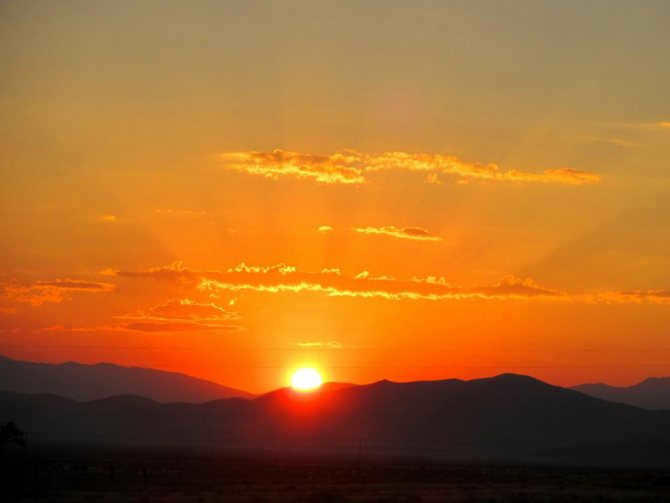
During other periods, the Sun follows a different path across the sky, resulting in either a shorter trajectory (causing longer nights) or a longer trajectory (causing longer days).
Two other significant dates to mention are December 22nd and June 21st. These dates mark the winter and summer solstices respectively. As the name suggests, these are the days when the Sun remains in the sky for the longest time. However, this only holds true for the Southern Hemisphere during the winter solstice and the Northern Hemisphere during the summer solstice. But why does this happen?
Variation in the Sun’s daily path above the horizon at different latitudes
The daily path of the Sun in relation to the horizon undergoes changes as we move from spring to summer and then to winter in our latitudes. You can observe this visible movement of the Sun along the ecliptic.
To understand how the daily path of the Sun changes at different latitudes throughout the year, refer to Figure 43. At point Q, the Sun reaches its highest point at noon during the equinoxes because it is on the celestial equator on those days. On the summer solstice, it reaches a point 23°27′ above, and on the winter solstice, it reaches a point 23°27′ below (complete the diagram with the daily parallels of the Sun on the solstices). Figure 45, on the left, illustrates the daily paths of the Sun above the horizon in the middle latitudes.
Let us now ascertain the latitude at which the Sun can reach its highest point directly overhead, known as the zenith, by determining the value of the angle f. From Figure 43, it is evident that this phenomenon occurs within the latitudes ranging from +23°, 5 to -23°,5 on specific days when the Sun’s declination matches the latitude of the location (measured as the angular distance between the point Q of the celestial equator and the zenith). After thoroughly examining the subject, we will be persuaded of the following conclusion.
At the equator of the Earth, the Sun, similar to all other celestial bodies, consistently emerges and sets in relation to the horizon not at an angle but vertically (Figure 45). Consequently, the length of day and night is equal throughout the year (the horizon divides the Sun’s daily route in half), and the duration of twilight is extremely brief. The Sun descends quickly below the horizon. At midday, the Sun reaches its highest point twice a year – on the days of the equinoxes, when its declination is 0°.
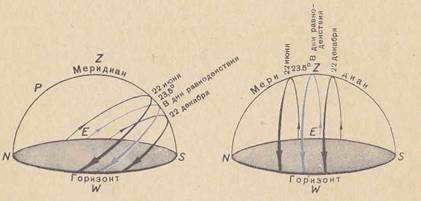
Figure 45 – The movement of the Sun above the horizon at various times of the year for an observer situated in mid-latitudes (left) and at the equator of the Earth (right).
There are certain locations on Earth where the Sun reaches its highest point in the sky at noon only once annually. This phenomenon takes place on June 22nd at a geographical latitude of +23°27′. This particular line of latitude is known as the Tropic of Cancer.
– A revolution. This term refers to the rotational movement of the Sun in relation to the celestial equator.
At the poles of the Earth, when the Sun is above the horizon, which aligns with the celestial equator, it follows a daily path that is nearly parallel to the horizon. As we already understand, this pattern continues at the North Pole of the Earth for a period of six months, from March 21 to September 23. During the period from March 21 to June 22, the Sun consistently rises above the celestial equator, transitioning from the southern hemisphere of the sky to the northern hemisphere. This leads us to the following conclusion.
At the Arctic region of our planet, the Sun only rises once a year, specifically around March 21st. After that, it remains above the horizon for a continuous six months, creating a complete circle in the sky every day. Additionally, during this time, the Sun gradually increases in height until June 22nd. Essentially, the Sun’s path in the sky can be described as a gentle spiral. From June 22nd to September 23rd, the Sun follows the same spiral but gradually descends towards the horizon. Once September 23rd arrives, the Sun is no longer visible above the horizon for the next six months. This means that half of the year is characterized by constant daylight, while the other half experiences continuous darkness.
As the distance from the North Pole to the south increases throughout the year, there are an increasing number of days when the Sun rises and sets. However, in the summer, there is still a period of consecutive days when the Sun does not set, and in the winter, there are a number of days when it does not rise at all. These phenomena, including the lower culmination of the Sun at midnight, can be observed in the Soviet Union in Murmansk and other locations north of the Arctic Circle.
It is evident that certain locations on our planet experience a unique phenomenon where the Sun doesn’t set throughout the year, except on June 22nd when it barely touches the horizon (in the northern region) during its lowest point (at midnight). Conversely, on December 22nd, the Sun doesn’t rise in these places, and at noon it only grazes the southernmost point, remaining below the horizon. These extraordinary locations lie on the Earth’s geographic parallel known as the Arctic Circle, specifically at 66°33′ latitude.
A similar occurrence takes place at the South Pole, mirroring the phenomena observed at the North Pole. However, at the South Pole, the polar day lasts from September 23rd to March 21st, while the polar night occurs from March 21st to September 23rd. At the southern polar circle (66°33′ south latitude), there is a day without sunrise on June 22nd, and a day without sunset on December 22nd.
In regions slightly to the south of the Arctic Circle, such as Leningrad, around June 22nd, the Sun sinks below the horizon at night, but not for a long time and not very deeply. As a result, its rays from beneath the horizon brightly illuminate the atmosphere (“white nights“).
From all of this, it is evident (and it should be firmly remembered) that the timing of sunrise and sunset is not solely determined by the date, but also by the geographical latitude of the observer. Therefore, the sunrise and sunset times indicated in regular calendars may only be accurate for a specific latitude and not for the entire expanse of the USSR.
There are a total of 4 hemispheres – Southern, Northern, Western, and Eastern. The Western and Eastern hemispheres can be characterized by their different time zones. In other words, when it is daytime in the Western Hemisphere, it is nighttime in the Eastern Hemisphere, and vice versa. This phenomenon occurs because the Earth rotates on its axis, causing different parts of the Earth to be exposed to the Sun at different times of the day.
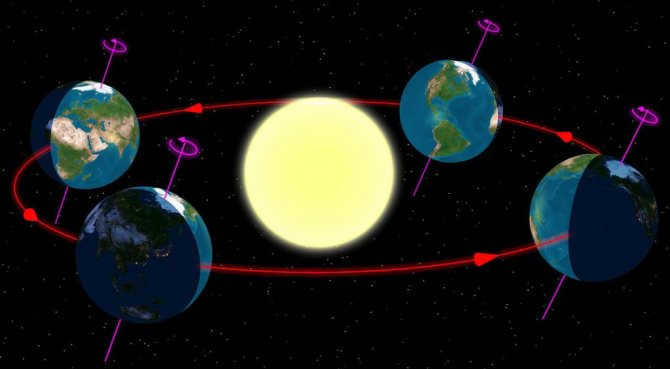
However, our focus lies on the Northern and Southern hemispheres, which exhibit distinct seasons. In other words, when it is winter in the Northern Hemisphere, it is summer in the Southern Hemisphere, and vice versa. Similarly, spring and fall are reversed between the two hemispheres. These seasonal differences can be attributed to the Earth’s rotation around the Sun and the resulting uneven illumination.
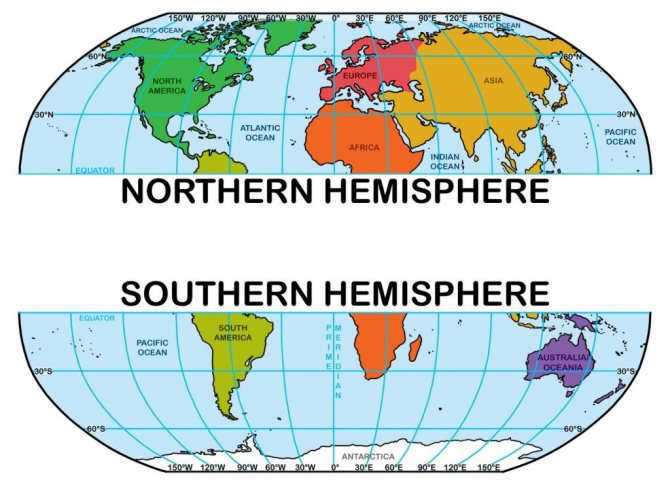
Differentiation
Let’s break down the dissimilarity between the Northern Hemisphere and the Southern Hemisphere.
- Polar temperatures.
Despite its name, the North Pole experiences milder weather compared to the South Pole. What causes this disparity? The North Pole is located in an oceanic zone, while the South Pole is situated in Antarctica, a solid landmass. Water at lower elevation conducts heat more effectively than a solid continent. - Air mass movement.
In the Southern Hemisphere, cyclones rotate clockwise while anticyclones rotate counterclockwise. Conversely, in the other hemisphere, air currents spin in the opposite direction. - Seasons.
While the warm summer season prevails in the Northern Hemisphere, people in the Southern Hemisphere have to endure the winter months. Conversely, the familiar winter months in the Northern Hemisphere correspond to summer in the other half of the globe. - Fauna.
Each hemisphere boasts its own distinct wildlife. In the North, you can encounter creatures like the walrus, polar bear, and polar fox. In the Southern Hemisphere, there are kangaroos and hummingbirds, among others. - Distribution of land and water.
The Northern Hemisphere is characterized by vast land masses, encompassing a significant portion of the Earth’s total land area. In contrast, the Southern Hemisphere is predominantly covered by water. - Population numbers.
What sets the Northern Hemisphere apart from the Southern Hemisphere is the vast difference in population. The Northern Hemisphere is home to an overwhelmingly larger number of people, while the Southern Hemisphere accounts for only 10% of the global population. - The starry sky.
The constellations and stars visible to those in the Northern Hemisphere differ from those seen by individuals in the Southern Hemisphere. One notable celestial feature in the Northern Hemisphere is Polaris, also known as the North Star, while the Southern Cross holds equal significance in the Southern Hemisphere.
Have you ever wondered why the sun appears to move from left to right in the sky? In the Northern Hemisphere, where we are located, the Earth rotates counterclockwise, causing the sun to appear to move in that direction. Conversely, in the Southern Hemisphere, the rotation is mirrored, resulting in the sun seemingly moving clockwise….
A picture capturing the beauty of the night sky with a long exposure.
An immersive and dynamic panoramic view captured on camera.

Polaris is situated directly above the Earth’s axis of rotation, causing all other stars to orbit around it in circles of varying diameters based on their angular distance from Polaris.
No evidence has been found to suggest that in the Southern Hemisphere, the motion of the stars would be opposite – clockwise.
The Southern Hemisphere refers to the part of the Earth that is located south of the equator.
In the southern hemisphere, summer occurs from December to February, while winter lasts from June to August. Cyclones in the southern hemisphere rotate in a clockwise direction, unlike in the northern hemisphere where they rotate counterclockwise. Conversely, anticyclones in the southern hemisphere rotate counterclockwise.
As an example, here is a cyclone in the Northern Hemisphere:
In the southern hemisphere, at astronomical noon, the Sun is positioned directly north, while in the northern hemisphere it is directly south. During the day, the Sun’s visible path across the sky moves from right to left
(when facing its position at noon),
unlike in the north where it moves from left to right.
. In the southern hemisphere, the Moon appears “upside down”. As a result, it waxes to the left and wanes to the right, whereas in the northern hemisphere it is the opposite.
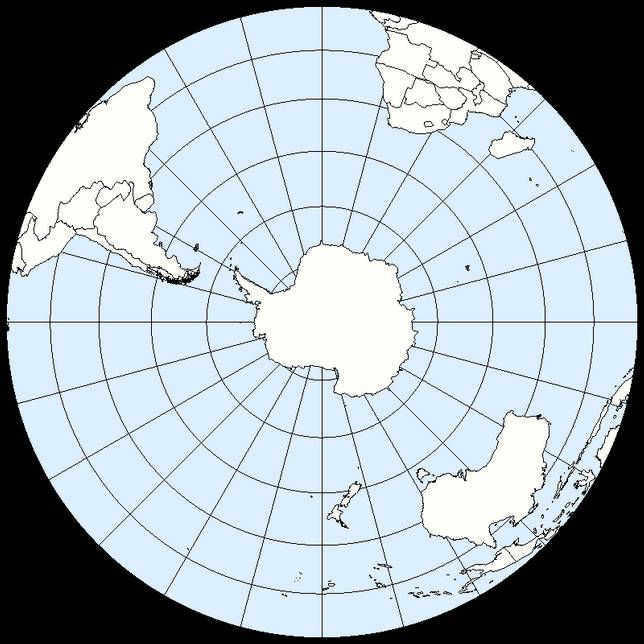
In the Southern Hemisphere, the Earth rotates in a clockwise direction. Let’s imagine ourselves standing on this hemisphere and observing the sun, which is located on the side of the equator. From our perspective, the sun would appear to move from right to left across the sky.
Have you ever pondered over this phenomenon?
This article was created using information from Wikipedia and an image search.
Where does the Sun set and where does it rise?
If we consider the Northern Hemisphere, during the summer season, the Sun rises in the direction between north and east, and sets in the direction between north and west. In winter, it rises in the direction between south and east, and sets in the direction between west and south. In fall and spring, the Sun rises in the direction between northeast and southeast, and sets in the direction between northwest and southwest. On the days of the fall and spring equinoxes, as previously mentioned, it rises and sets precisely in the east and west, respectively.
In the Southern Hemisphere, the situation is opposite. This is what accounts for the variation in seasons.
It is worth noting that the difference between night and day becomes more pronounced as you move further north in the Northern Hemisphere and further south in the Southern Hemisphere. To put it in a certain rule, it can be stated as follows: the closer a region is to the pole, the greater the contrast between night and day. Conversely, the closer a region is to the equator, the smaller the difference between day and night.
For example, at the poles, nights can last for several months, just like the days. On the other hand, at the equator, there is almost no distinction between night and day. This is why there is no winter or summer at the equator, and the lighting conditions remain constant.

The Sun, which lies at the heart of our solar system, is orbited by our planet. It is the primary force that governs this system, with all other celestial bodies revolving around it. The changing angles of sunlight on Earth result in the shifting of seasons, while the planet’s rotation on its axis creates alternating periods of light and darkness known as day and night. We have become accustomed to witnessing the Sun rise in the east and set in the west. However, this is not always the case. Only on two specific days each year – March 21 and September 23 – do the Sun’s rays evenly illuminate the Earth’s surface from the farthest reaches of the north to the South Pole. During the remainder of the year, the Sun’s path shifts from north to south. Let us delve into where the Sun truly rises and sets, and why its rays no longer strike our surroundings directly as they once did, but instead veer slightly to the side.
Sunrise is the moment when the upper edge of the sun’s disk emerges above the horizon. It can be described as the beginning of a new day or the first light of morning. However, the precise timing of sunrise is influenced by the presence of an atmosphere and atmospheric refraction, which is the bending of light rays as they pass through different layers of the atmosphere. As a result, observers on Earth see the sunrise before it actually occurs, and different regions experience varying lengths of daylight. For instance, in locations near the equator, the time difference can be as much as 10 minutes, while in temperate latitudes, it can extend to one and a half hours.
The sunset occurs when the sun’s disk descends below the western horizon. As the sun sets, the sky’s colors become more vibrant: initially, the sun turns yellow, then orange, gradually transitioning to shades of red. As the sun’s colors change, so does the color of the surrounding sky, resulting in a beautiful combination of golden to blood red hues against a blue or greenish backdrop.
When witnessing the sunset, it is worth noting the opposite side as well. In that direction, a strip of bluish ash-colored shadow, known as the Earth’s shadow, appears, and above it, a radiant segment called the Belt of Venus can be observed. As long as the sky is not obstructed by clouds, this phenomenon can be witnessed from any location on the planet.
As the Sun descends beneath the horizon, its hues intensify. As the Sun eventually vanishes, the Buddha Rays emerge – vibrant streaks of crimson that slowly fade with each passing minute. Simultaneously, the Belt of Venus fades away, making room for the Moon’s ascent and the onset of night.
How to distinguish between sunset and sunrise
Identifying sunrise and sunset serves as an indication of the Earth’s rotation on its axis. Initially, one might assume that sunrise and sunset are identical. However, those who wake up early have the opportunity to compare: the ascending sunrays appear brighter, while the surrounding colors adopt more delicate hues. Conversely, sunset is characterized by the luminary and the surrounding sky being adorned with warm red tones. The evening coloration is a result of dust particles becoming visible, as they are lifted into the air during the evening when humidity is lower and air currents are stronger.
Earth, our magnificent planet, is traditionally divided into four hemispheres: the North, South, West, and East. The North and South hemispheres are separated by the equator, while the West and East hemispheres are determined by the Greenwich meridians and the 180⁰ meridians. The North and South Hemispheres play a significant role in the changing of seasons. This transformation occurs due to the Earth’s orbit around the Sun and the uneven distribution of sunlight. When winter arrives in the North Hemisphere, summer is in full swing in the South Hemisphere, and vice versa. So, when it’s snowing in the South Hemisphere, it’s scorching hot in the North Hemisphere.
Different Perspectives:
In the North Hemisphere, we observe the sunrise and sunset in the following directions:
Spring: Northeast
Summer: Northeast
Fall: Southeast
Winter: Southeast
To accurately calculate the occurrence of sunrise in the eastern direction and sunset in the western direction, it is necessary to patiently await the vernal equinox on March 20 and the autumnal equinox on September 23.
There exist two additional significant days throughout the year that should be kept in mind – the solstice days. On these particular days, the sun reaches either its highest or lowest point in its path. The winter solstice takes place on December 21-22, while the summer solstice occurs on June 20-21.
Orienteering is a valuable skill not only for those who enjoy hiking, but also for individuals with a general interest in basic navigation. Here is a step-by-step guide on how to determine the correct direction when situated in the Northern or Southern Hemisphere:
Position yourself facing the Sun, ensuring that your back is turned towards your shadow.
In the Northern Hemisphere:
North is directly in front of you,
South is behind you,
West is to your left,
East is to your right.
Did you know? In the Northern Hemisphere, the celestial sphere moves in a clockwise westward direction through the southern part of the sky, while in the Southern Hemisphere, the movement is clockwise across the Nordic region of the sky from east to west. It can be quite confusing for a traveler who is lost in Australia and trying to determine the directions of west and east.
Which direction does the Sun rise from?
It is interesting to note that 30% of the world’s population believes that the Earth is stationary and the Sun moves across the sky. This belief stems from the relativity of motion. Depending on the reference frame or system of measurement chosen, the motion or lack thereof, as well as the direction of that motion, can be perceived subjectively.
Movement of the Sun
The Sun moves in its orbit around the Earth and rotates on its axis. It completes one revolution in 24 hours (a day), with the revolutions occurring counterclockwise. Therefore, the claim that the sun always rises in the east and sets in the west at the same locations is inaccurate. The points of sunrise and sunset are constantly changing. As the seasons change, the orientation to sunrise also changes. After the spring solstice, the points of sunrise and sunset begin to shift towards the north. This shift continues until the day of the fall equinox. The further north an observer is, the more the sunrise point shifts towards the west.
Where does the Sun move?
If we envision our planet as being completely flat and motionless, the light source would always be directly overhead, and there would be no occurrences of sunrise or sunset. However, because the Sun rises in the east and sets in the west, life on Earth follows a distinct cyclic pattern.
Every morning, the Sun’s disk emerges on the eastern side, following a predetermined path. The area of the horizon where the Sun sets is commonly referred to as the west. In reality, the Sun does not physically move anywhere; it remains stationary while the Earth rotates on its axis, leading to the alternation of day and night. In the field of astronomy, the moment of sunset is when the upper portion of the Sun’s disk completely disappears behind the horizon.
Movement of the Sun
When we observe the Sun (using a specialized filter, of course), it may seem stationary. However, it is important to note a particular object as a point of reference. After some time, we will notice the shadow shifting, its length changing, and the Sun appearing to move to the right or west in relation to this object.
The Earth’s axis of rotation is tilted at an angle of 23 degrees with respect to the plane of its orbit and is not parallel to the axis of rotation around the Sun. This tilt angle plays a significant role in the changing of seasons. As the Earth transitions from the southern to the northern hemisphere, it inclines by 23 degrees. Conversely, when it moves in the opposite direction, it decreases by the same amount. Without this tilt angle, we would not have knowledge of the alternating seasons.
Movement of the Sun and its Impact on Earth’s Illumination
The level of illumination on our planet varies throughout the year due to the distance between the Earth and the Sun, as well as the Earth’s positioning in relation to the Sun. The Sun’s movement during the day can be described as follows:
At around 6 a.m., the Sun emerges as the main heat source in the eastern direction, and by 6 p.m., it gradually shifts towards the west. At approximately 12 noon, the Sun reaches its highest point in the sky, known as the zenith, which aligns with the geographic south. However, it is important to consider the slight variation between real time and astronomical time for precise orientation.
Understanding the Sun’s path of illumination, along with the approximate time and location on a map, holds significant importance for various purposes. In order to achieve this, it is crucial to determine the Sun’s rising and setting points, as well as its movement throughout the day and year.
One of the simplest and most popular methods for orienting ourselves using the Sun is as follows:
1. Locate a straight stick that is approximately one meter in length and insert it into the ground so that its shadow is clearly visible.
2. Place a marker at the point where the shadow ends.
3. After a 15-minute interval, during which the shadow will have moved, place a second marker.
4. Connect these two points with a straight line and extend it by 30 centimeters.
5. Stand on the first marker with the left foot and on the second marker with the right foot.
In the northern hemisphere, this method provides us with the direction to the north.
This well-known technique of navigating using the Sun and a clock possesses its own unique characteristics, and its improper utilization can result in mistakes and emergencies. It is crucial to acknowledge that this approach is solely valid in the northern hemisphere, north of the tropics. In regions with high latitudes, the Sun does not disappear below the horizon for multiple weeks, and during the polar night, it remains invisible throughout.
The position of the Sun during midday
Traditionally, we tend to associate the Sun with the southern direction at noon, which serves as a useful reference point for navigation. Nevertheless, this representation is merely an estimation of its actual position.
In reality, there are various factors that influence the Sun’s location during midday, thereby proving that it does not consistently align with the south:
1. The position of the land. The official noon at a specific location may not align with the astronomical noon. It is commonly acknowledged that at 12 noon the Sun is directly above the equator, but there is a flaw in this assumption – we fail to consider that the Sun has not yet reached its highest point in its trajectory. When we observe it from Earth, we always witness its ascent in the east, regardless of whether we are in the northern or southern hemisphere. Individuals situated on different longitudes will witness the Sun at its zenith at varying times: the person located further east will see it first, followed by the person located further west.
3. The Earth’s orbit around the Sun is not circular but elliptical, resulting in varying distances between the two celestial bodies. This variation in distance affects the length of the day: when the Earth is closer to the Sun, the day becomes longer, and when it is farther away, the day becomes shorter. As a result, the solar day, which is the period from one noon to the next, can have different durations.
Furthermore, the Earth is tilted on its axis of rotation. This tilt causes the Sun to appear at different locations in the sky throughout the year, especially for observers in the northern hemisphere. Instead of a straight line, the markings of the Sun’s position at 12:00 o’clock each day form a figure-eight shape, representing either the north or south side.
If these deviations are not taken into account, errors in direction can occur. In the middle latitudes, an error of up to 4 degrees may arise, while in the tropics, the error can be 10 degrees or more.
4. The position of the solar disk is also influenced by geographical latitude. In the middle latitudes of the southern hemisphere, the Sun is situated in the south during the solstice and is directly overhead in the summer. In the higher regions of the tropical areas in the northern hemisphere, the Sun is also in the south and is directly overhead in the summer. In the lower regions of the tropical areas in the southern hemisphere, the Sun is in the north and is directly overhead in the winter. At the equator, the Sun is in the south from the autumn equinox to the spring equinox and in the north from the spring equinox to the autumn equinox.
As a result, when transitioning from the tropical zones to temperate latitudes, the zenith of the Sun (when there is no shadow) is observed once a year. Closer to the equator, this phenomenon occurs twice a year.
A few decades ago, scientists used to rely on lengthy observations and data work to calculate the time of sunrise and sunset. However, modern technology has made these calculations much simpler. With the help of special geolocation and date applications, as well as geographic coordinates, it is now possible to accurately determine when the Sun will appear above the horizon, reach its highest point, and set below the horizon. Additionally, there are tables available that show the Sun’s displacement at different latitudes throughout the year. The azimuths in these tables are measured from the northernmost point.
These tables serve to debunk the misconception surrounding sunrise and sunset.
When viewed from space, the solar disk presents a completely different perspective. Astronauts have described it as a captivating sight, with all the planets orbiting the Sun counterclockwise, moving from west to east. One unique observation is that Uranus seems to be rotating “lying down,” possibly due to a shift in its center of gravity. Additionally, Venus rotates in the opposite direction, which scientists speculate could be a result of a collision with a meteorite thousands of years ago.
Aboard the International Space Station, astronauts are fortunate to witness multiple sunrises in a single day. Since the station orbits the Earth every hour and a half, it encounters the Sun a remarkable 16 times daily.
It’s truly fascinating! However, in space, the sunrise is a fleeting moment that lasts only a few seconds. NASA astronauts have captured stunning photographs that depict this incredible event. Prior to the Sun’s appearance, the water surface takes on a golden hue, creating a surreal effect, while the clouds assume a mesmerizing form.
North Pole and other regions around the globe
Polar explorers have made a fascinating discovery: while watching the sunset at the North Pole, they have noticed that the celestial body appears to move from east to west, even though its actual movement occurs from west to east. It is important to note that this phenomenon only occurs at the North Pole, where day and night last for half a year. During the autumn equinox, the Sun completely traces a circle on the horizon. Each day, it gradually spirals higher and higher (although not higher than 23-27 degrees) until it reaches the peak of the summer solstice. After that, the process reverses until the autumn equinox. During this time, the Sun passes over the entire horizon, and each day it sinks deeper below the horizon. The dawn can last anywhere from a week to a month and is visible all along the horizon. The white nights gradually become darker and darker, marking the middle of the polar night. However, the Sun never drops below 23-27 degrees below the horizon, so it remains bright, and the morning star can still be seen.
When comparing two geographical points equidistant from the equator but in different hemispheres, it becomes apparent that at noon, the Sun is positioned further south at the North Pole, whereas at the South Pole, its disc moves towards the north. On the equator at noon, the Sun can be observed in either the northern or southern direction, but on two specific days in a year, it is directly overhead.
Twilight
Twilight is the period of time in the evening and morning when the main star is either just beginning to rise or has not yet set. This enigmatic time, which has been the inspiration for poets and the setting for movies, typically lasts for approximately two hours. During this time, the rays of the sun create a kaleidoscope of colors on the earth, which are reflected in the upper layers of the atmosphere. It’s important to note that the duration of twilight can vary depending on the calendar and the location of observation:
– In the equatorial zone, twilight lasts for approximately 30 minutes.
– In temperate latitudes, twilight can persist for around two hours.
– In subpolar regions, twilight can endure for several days.
Attention! The period of twilight can be divided into three parts. The start of civil twilight occurs when the sun’s circle dips 6 degrees below the horizon. The next stage, known as nautical twilight, begins when the sun descends an additional 6-12 degrees. Finally, astronomical twilight commences when the sun drops another 12-18 degrees below the horizon. This third period is the darkest and occurs right before night fully sets in.
Why is it important to observe the Sun’s movement?
For centuries, people have recognized the correlation between the movement of celestial bodies and events on Earth. This realization led to the development of early calendars, which were based on the movements of the Sun and the Moon. Nowadays, our understanding of the Sun’s movements is grounded in scientific research about our planet’s development:
– The Sun’s rhythms have a direct impact on the biological rhythms of living organisms.
– By studying solar flares and magnetic storms, we can predict and prepare for weather conditions that may affect individuals who are sensitive to these changes.
– The Sun’s movement serves as a reliable guide for navigation and understanding of the Earth’s terrain.
– Astronomical calculations heavily rely on key indicators of solar activity.
![Time of namaz in Novosibirsk [current_date format='d F, Y'] for today according to Hanafi madhhab](/wp-content/uploads/images/kogda-byvaet-solnce-v-zenite_23.jpg)

Discover the meaning of the phrase “sun at zenith” and its significance across different cultures. Explore its connection to navigation and timekeeping. Uncover various techniques for determining the sun’s zenith and how they are applied in modern times. Acquire a comprehensive understanding of how the sun at zenith can be utilized for time measurement.
The sun has always been and continues to serve as the primary source of light and warmth on Earth. It not only governs our day and night cycles but also profoundly influences all living organisms and plant life. However, few are aware that the sun can also function as a sort of “timepiece,” allowing us to determine the time based on its position.
In this article, we will explore extensively the process of determining time by the Sun at its zenith. We will discuss the necessary tools and knowledge required for this method and highlight its practical applications in everyday life.
If you are eager to learn how to accurately calculate time based on the Sun’s position, join us in this insightful journey where we will provide you with all the essential information you need!
Discover the art of telling time using the Sun at its highest point: practical advice and step-by-step guide
Get Started
The traditional method of telling time by observing the Sun has been employed for centuries, with our ancient hunter-gatherer predecessors relying on this technique. Nowadays, advancements in geolocation technology and precise timekeeping devices have made this practice less common. However, having the ability to determine time using the Sun can still prove valuable in certain situations. In this informative piece, we will explore the fundamental principles and useful suggestions for mastering this ancient skill.
Step-by-step instructions
In order to calculate the time when the Sun is at its zenith, you should follow these steps:
- Determine your precise location. You can accomplish this by using a smartphone app or by obtaining the coordinates of your location through GPS.
- Establish the date. The date has an impact on the angle at which the Sun is elevated above the horizon, thus affecting the zenith time.
- Identify the moment when a shaded spot is found. To do this, position a vertical object (like a stick) into the ground and observe its shadow. Once the shadow becomes the shortest, it indicates that the Sun is directly overhead and the time of discovering a shaded spot coincides with the zenith time.
Helpful suggestions
1. Pay attention to shadows
On a sunny day, take note of the shadow cast by any vertical object, such as a pole, tree, or house. The shortest shadow indicates that the Sun is directly overhead.
2. Utilize a sundial
A sundial is a simple tool for telling time based on the Sun. It consists of a vertical rod with a cylinder or ball mounted on top, which casts a shadow. By measuring the length of the shadow, you can determine the time using tables or create a customized table for your specific location.
3. Memorize the zenith moments
The zenith of the Sun occurs when it is closest to the top of the celestial sphere. Find out the time when the Sun reaches its zenith at your location and remember that moment for future timekeeping.
4. Utilize the mobile application
In addition to traditional methods of determining the time based on the position of the Sun, there are various mobile applications available that utilize GPS technology to accurately determine the time and provide information about the Sun’s current position in the sky.
5. Consult with experts
If you desire to determine the time by the Sun with utmost precision, it is advisable to seek assistance from astronomers, navigation professionals, or local museums or observatories. These knowledgeable individuals can also guide you in selecting the appropriate equipment for precise time measurements.
Question and Answer:
Q: What does “sun at zenith” mean?
The term “sun at zenith” refers to the position of the sun when it reaches its highest point in the sky at a specific location and time.
Q: How often does the sun reach its zenith throughout the year?
The frequency at which the sun reaches its zenith depends on the geographical location. In tropical regions, it happens twice a year, in subtropical regions, it happens once a year, and in temperate latitudes, it cannot be observed at all.
Question: When does the sun reach its highest point in the tropics?
The sun reaches its highest point in the tropics between the summer solstice and the winter solstice, typically in June and December.
Q: How can you accurately determine when the sun reaches its zenith?
In the tropics, you can accurately determine the time of the sun reaching its zenith by using a caliper or celestial globe, as well as by utilizing a sundial, which typically indicates the moment of the sun reaching its highest point.
Q: What impact does the sun being at its highest point in the sky have on the weather?
When the sun is at its zenith, it is a signal of hot and arid weather in tropical regions. This time period also experiences an increase in ultraviolet radiation and a higher risk of disease.
Question: How does the sun being at its peak position affect plant life?
When the sun is at its zenith, it is the time when plants in tropical areas experience their highest levels of growth and development. However, the hot and dry conditions during this period can also lead to vegetation drying out and causing wildfires.





